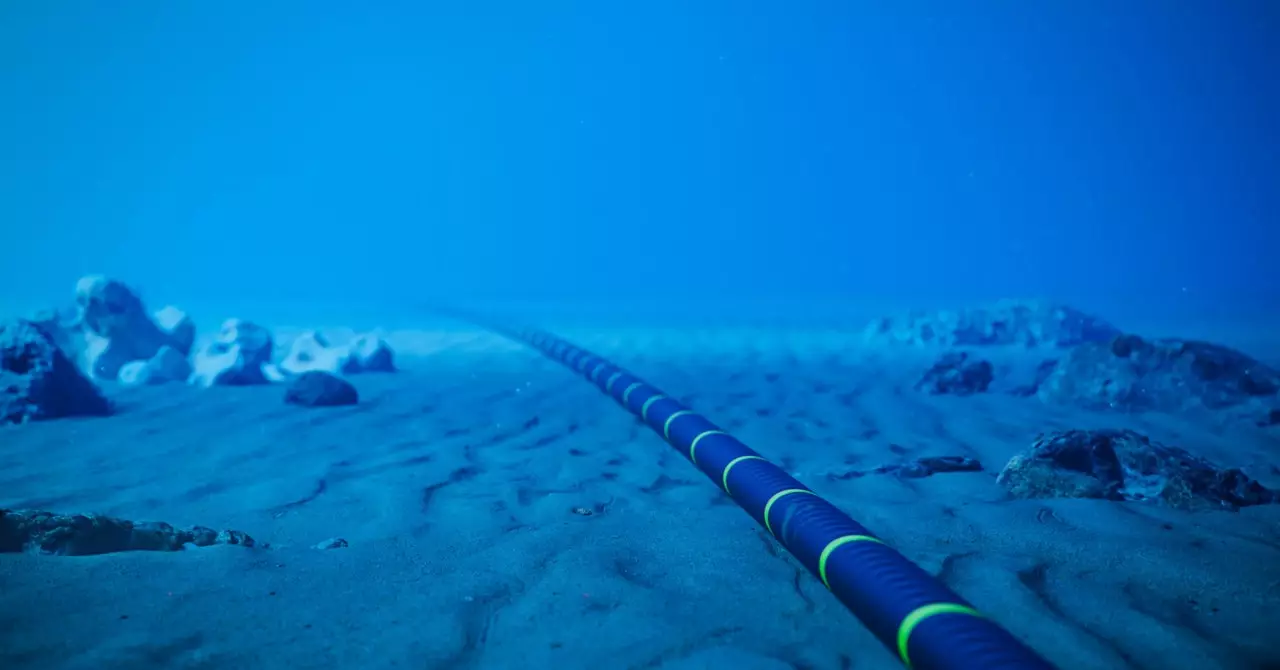In an ambitious move to enhance global internet infrastructure, Meta has initiated the Waterworth Project, a groundbreaking endeavor to lay down an extensive 50,000-kilometer undersea cable. This monumental investment aims to bolster the management of its services while also addressing the growing demand for digital connectivity across five continents. Given the substantial role that submarine cables play in international internet traffic—over 95%—this project is set to redefine the digital landscape.
The Waterworth Project signifies a strategic pivot for Meta, as the tech giant aims to refine the control over its vast array of services that include social media platforms such as Facebook and Instagram. By creating a new digital backbone, this initiative promises not only to strengthen existing connections but also to establish new oceanic corridors essential for high-speed internet. In addition, as artificial intelligence becomes more integral to everyday life and business operations, the demand for reliable and expansive internet infrastructure continues to surge. Meta’s vision articulates how this new cable network could serve as a catalyst for AI advancements worldwide, highlighting a future where digital innovations flourish due to improved connectivity.
From its inception, the Waterworth Project has been recognized for its ambitious scale and significance. The cable will reportedly extend further than the Earth’s circumference, laying claim to the title of the longest undersea cable ever constructed. It is set to connect pivotal locations such as India, the United States, Brazil, and South Africa, bringing with it both logistical challenges and unprecedented opportunities for digital growth in these regions.
India emerges as a focal point in the Waterworth Project, with Meta emphasizing the potential that this infrastructure could unlock in the rapidly evolving digital landscape of the country. The initiative aligns with India’s aspirations to expand its digital economy significantly. Recent collaborations between Indian leadership and global figures underscore the importance placed on initiatives that enhance connectivity in the region, suggesting that Waterworth could accelerate existing investments in technical infrastructure. This mutual recognition of the potential benefits heralds a new chapter in international collaboration in the tech arena.
In a joint statement released by the leaders of the United States and India, the significance of the undersea cable initiative was clearly highlighted. The collaborative stance taken by these countries demonstrates not only a commitment to enhancing connectivity but also to fostering a cooperative environment conducive to technological advancements. This kind of support may be pivotal in ensuring the project’s success, revealing the intertwined nature of technology and diplomacy in today’s global context.
The Waterworth Project promises a cutting-edge approach to undersea cable technology, incorporating an innovative cable architecture featuring 24 fiber pairs. Such design choices reflect a dedication to optimizing deep-water routing, which is critical for ensuring the stability and efficiency of internet connectivity in various aquatic environments. In addition, Meta’s advancements in burial techniques aim to mitigate risks associated with natural disruptions and human activities, such as fishing or shipping traffic that could damage vulnerable cable sections.
This level of investment in state-of-the-art engineering and environmental safeguards illustrates the company’s commitment to sustainability and reliability within the telecommunications sector. This pushes the envelope of what can be achieved with undersea technologies, setting new standards for future projects in the field.
As the tech landscape undergoes rapid transformation, Meta’s Waterworth Project places it in direct competition with other giants of the industry, such as Google, Amazon, and Microsoft. Google currently possesses a robust portfolio of undersea cables, a competitive advantage that Meta is determined to challenge. By fully owning the Waterworth Project, Meta seeks to establish independence in a market where shared ownership can sometimes dilute control over essential infrastructure.
The Waterworth Initiative stands as a testament to Meta’s forward-thinking approach to digital connectivity and its determination to shape the future of the global internet landscape. By addressing the connectivity needs of multiple regions, particularly India, and pushing the boundaries of current cable technology, Meta is positioning itself as a vital player in the ongoing digital revolution, setting the stage for the AI innovations of tomorrow. This monumental project is not just about laying cable; it signifies a comprehensive vision for the future of global communication and technological advancement.


Leave a Reply